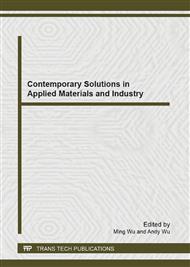p.157
p.161
p.166
p.172
p.177
p.183
p.188
p.194
p.200
Study on the Effect of Porosity on the Reflection Coefficient and Wave Pressure on the Partially Perforated Plates
Abstract:
2D numerical wave flume is established based on the VOF method and k- model to numerically simulate the interaction of wave with perforated plates. The internal source generation of wave is applied in making wave area whose end is placed the sponge layer to absorb the reflection of wave. The numerical results of reflection coefficient before perforated plate are compared with the experimental results of reference (Liu, 2008) to verify the numerical method. By changing porosity, the effect of porosity on reflection coefficient can be analyzed. Moreover, the pressure difference between the outer and inner of perforated plate was studied, and then the mutual influence of porosity on the pressure difference is obtained according to the substantive numerical results.
Info:
Periodical:
Pages:
177-182
Citation:
Online since:
April 2013
Authors:
Price:
Сopyright:
© 2013 Trans Tech Publications Ltd. All Rights Reserved
Share:
Citation:


